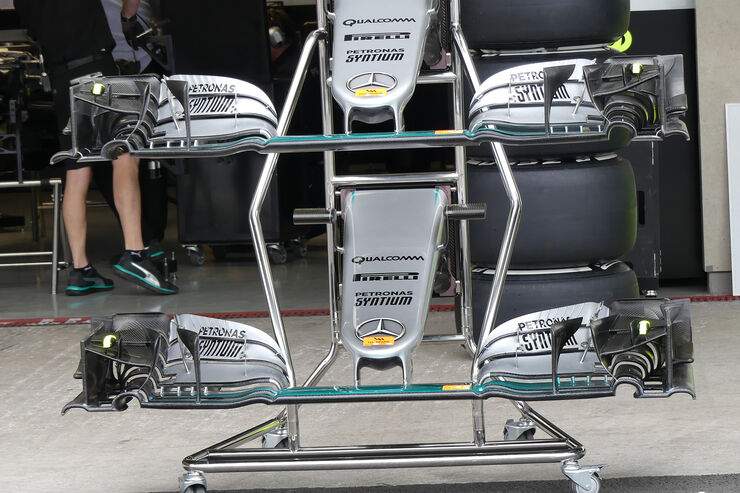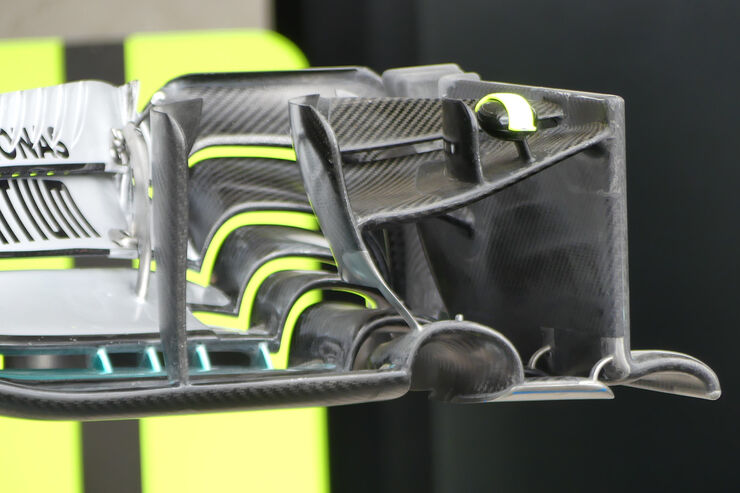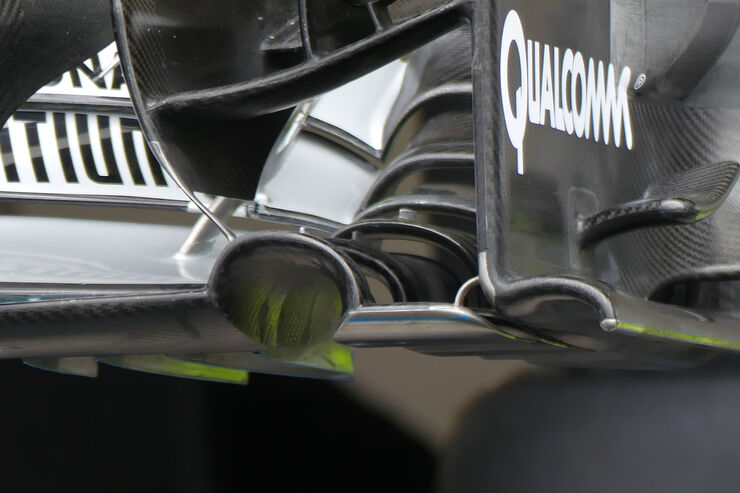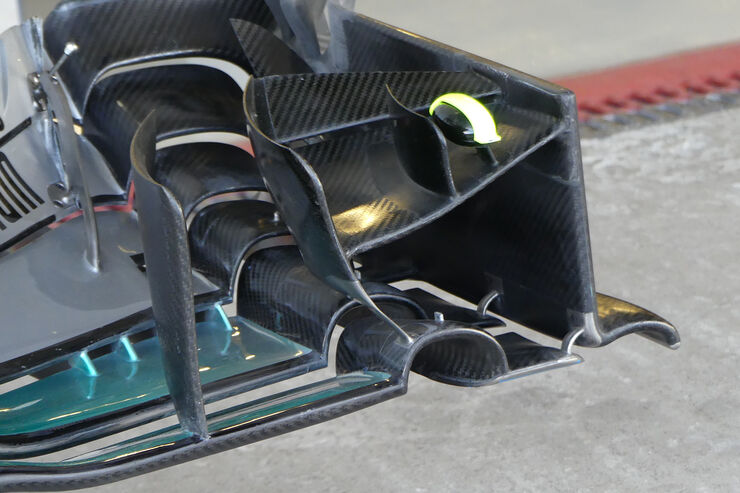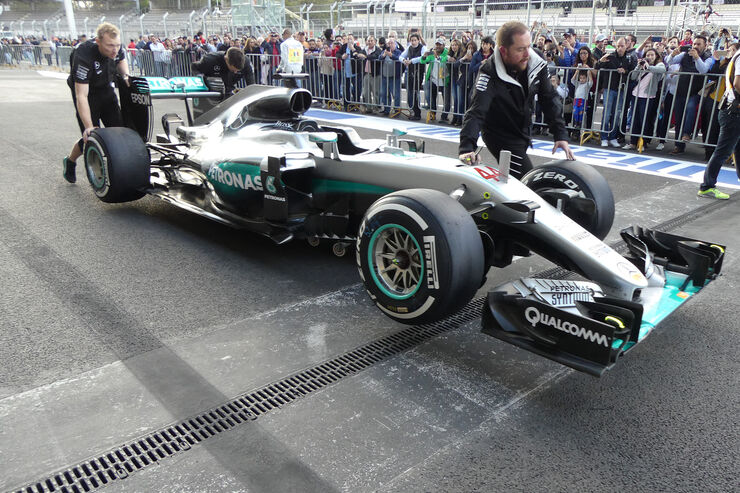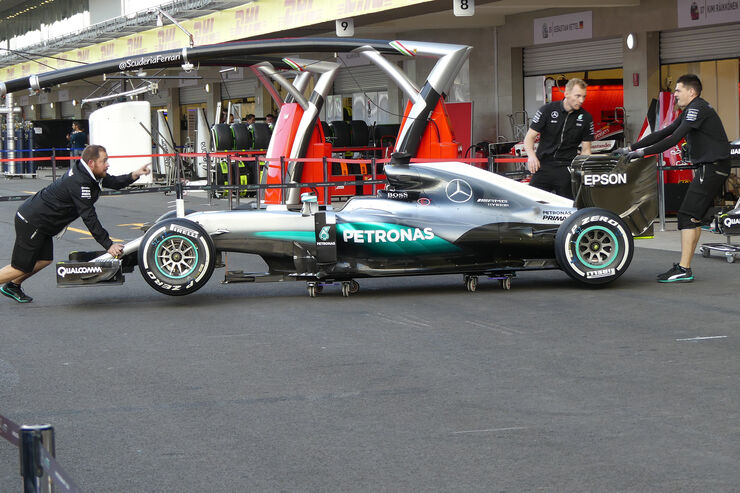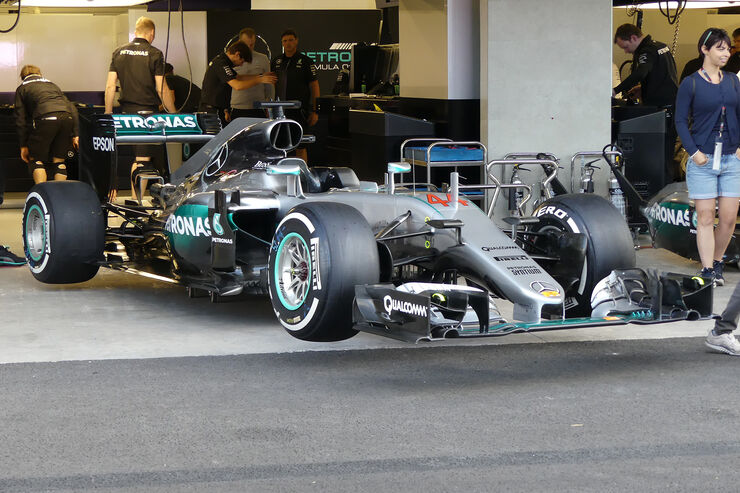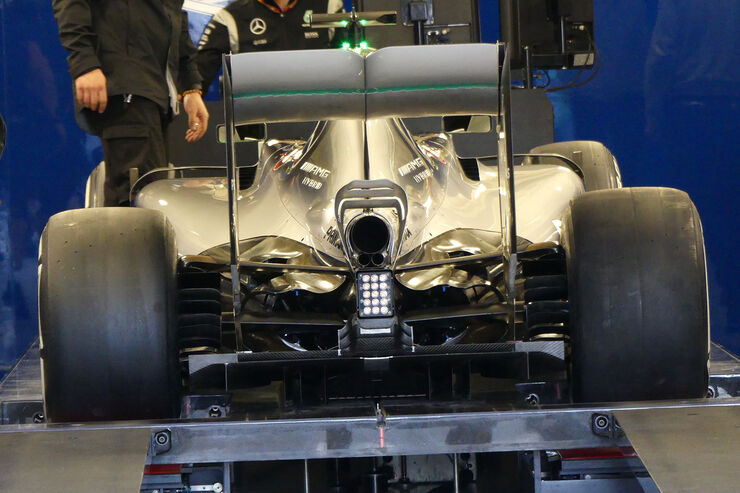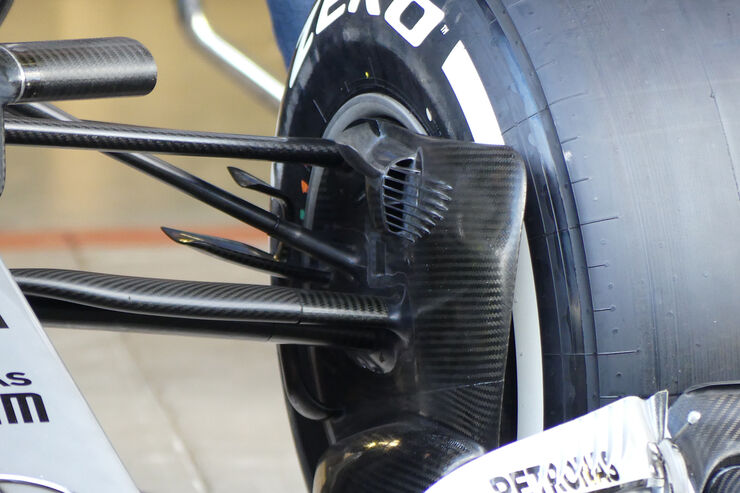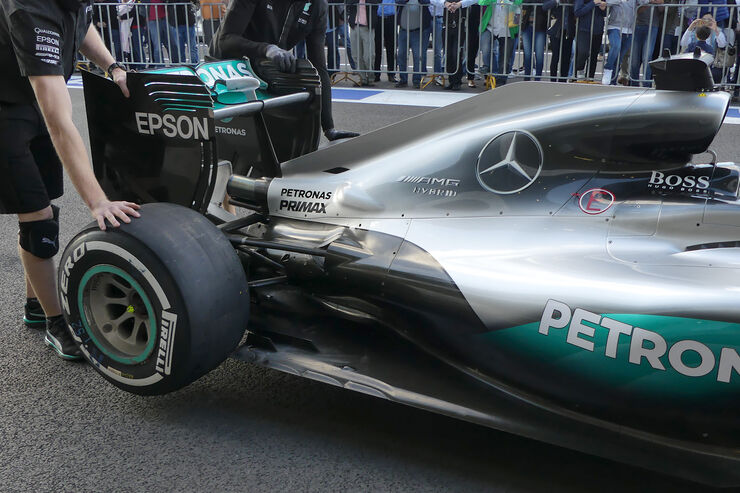CBeck113 wrote:The roll characteristics of the W07 make me wonder if they actually found a way to cope with the form change of the diffusor in corners. Since we know that a) the entire floor is used as a diffusor, and b) the most important factor for a diffusor to work is the volume flow of air (Vdot from here on out, the dot is normally above the V), what speaks against Mercedes adapting a design which is very consistant, to the point where the form change can be compensated by redirecting the vortices to maintain the Vdot, and so maintianing a constant level of grip? They would have to make sure that the drop on the outer side of the car in the corner doesn't cause the vortices to tear off. Or could they be used to support the vortices being generated towards the center of the car and at the barge boards, and once they are gone, allow the other vortices to shift into this area of turbulent air? I imagine that this can happen on both the low (outside of corner) and high sides. As long as the Vdot for the diffusor geometry is fulfilled, it will dictate the pressure rise and create downforce.
I'm just thinking out loud, so please don't expect me to produce a calculation validating my theory - if I had the capacity to do so, I'd Dr. Beck by now

I think the answer is really quite simple. It starts with the understanding that certain corners are best optimized with aerodynamic downforce. For others, it doesn't matter. Braking, weight transfer and traction are vital. There's yet a third type where various blends of these factors are desirable from entry through apex and exit.
This leads to my hypothesis about the Mercedes advantage:
Its their sim, CFD capabilities, computer power and software. I will wager that it is properly light years head of everyone else.
This helps them not only understand their car like no other team, it also helps them achieve unprecedented levels of harmony between tires, aero, engine and mechanical. This in turn provides them with the ability to "work ahead," in ways that other teams can't--the ability to dial in their setup to suit the shapes, forces and topographies of each track--to mind bending levels that would surprise even the most imaginative among us.



